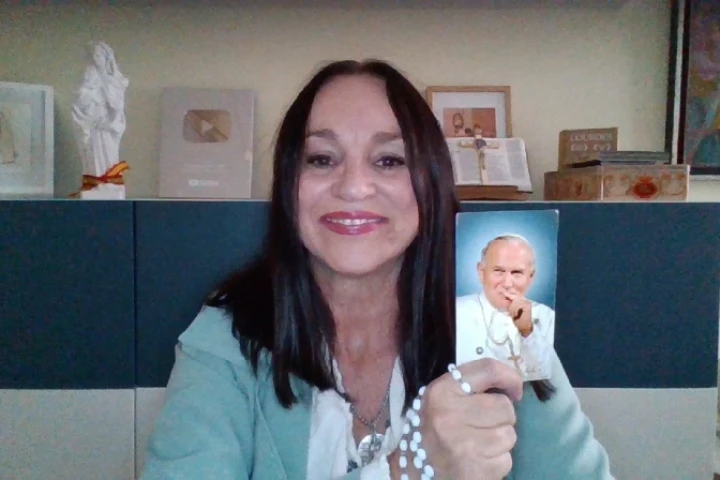
Pope John Paul II is a name that resonates deeply in the hearts of many Catholics and people worldwide. Revered as a saint, his influence stretches beyond his time on earth, and for many, it has been a guiding light that continues to work miracles even after his passing. A recent encounter illustrates this profound impact — a woman, an atheist for 35 years, rediscovered her faith in God during a pilgrimage to the tomb of St. John Paul II. This story is an incredible testament to the spiritual presence of Pope John Paul II and his enduring impact on believers and non-believers alike.
The Life and Legacy of Pope John Paul II
Born Karol Józef Wojtyła in Wadowice, Poland, in 1920, Pope John Paul II lived through some of history’s darkest periods, including World War II and the oppressive years under Communist rule. His life was shaped by immense suffering and loss, yet he emerged as a beacon of peace, love, and forgiveness. Rising to the papacy in 1978, he became one of the most influential figures in modern history, leaving a legacy that reshaped not only the Catholic Church but also the world.
John Paul II is remembered for his unwavering faith, compassion, and advocacy for human dignity. He led the Church through profound changes, standing firmly against communism, promoting social justice, and connecting with people of all backgrounds and beliefs. He traveled to over 129 countries, spreading a message of hope and unity, bringing the Church closer to millions. Canonized in 2014, his sanctity is celebrated, with countless stories of lives changed and miracles attributed to his intercession.
An Atheist’s Journey to Faith at the Tomb of Pope John Paul II
One of the most captivating stories highlighting John Paul II’s miraculous influence is that of a woman who had turned away from faith for over three decades. For 35 years, she lived as an atheist, deeply skeptical about the existence of God and the power of prayer. But a pilgrimage to the tomb of St. John Paul II in St. Peter’s Basilica in Vatican City changed her life forever.
Feeling an inexplicable draw to his resting place, she found herself compelled to visit. In her own words, the experience was nothing short of miraculous. Standing before the tomb, she felt a presence she had long denied. As tears streamed down her face, she felt a profound sense of peace and an overwhelming connection with God she had not felt since childhood. She left the basilica a changed person, renewed in her faith and convinced that Pope John Paul II had guided her back to God.
Miracles Attributed to Pope John Paul II
This story isn’t an isolated case; numerous accounts of miracles attributed to John Paul II have come to light since his death. In fact, two medically unexplained healings were key to his canonization. One was a French nun, Sister Marie Simon-Pierre, who suffered from Parkinson’s disease and was healed after praying to him, and the other was Floribeth Mora Diaz from Costa Rica, cured of a brain aneurysm through his intercession. Stories like these continue to emerge, often from people who had lost hope, only to find it rekindled by the spirit of this modern-day saint.
Why Does Pope John Paul II Still Inspire Miracles?
One reason for Pope John Paul II’s enduring appeal lies in his deep empathy and willingness to engage with people of all beliefs. He was the first pope to openly communicate with people of different faiths, particularly atheists, inviting them to seek understanding and dialogue. His teachings on mercy, forgiveness, and the sanctity of life resonate with people who are searching for meaning and healing in a troubled world.
Moreover, his life was a testament to the power of love and resilience in the face of suffering. From losing his mother at a young age to enduring Nazi and Communist regimes in his native Poland, John Paul II understood suffering intimately and saw it as a path to compassion and empathy. His connection to people was real, personal, and transformative.
Rediscovering Faith in a Skeptical Age
In today’s increasingly secular world, faith can sometimes feel outdated, and religious figures are often viewed with skepticism. However, stories like the atheist who reencountered God at the tomb of St. John Paul II remind us that faith isn’t bound by time or place. Pope John Paul II’s legacy continues to inspire people from all walks of life, often in the most unexpected ways. His life was proof that love and faith could break down any barrier, even the wall of disbelief.
How Can We Draw Inspiration from St. John Paul II?
1. Embrace Forgiveness: John Paul II famously forgave Mehmet Ali Agca, the man who attempted to assassinate him. His example of forgiveness can inspire us to let go of resentment and find peace in reconciliation.
2. Stand for Justice: As a vocal opponent of both Communism and human rights abuses, John Paul II showed that faith could be a powerful catalyst for positive change. We can honor his memory by standing up for justice and treating everyone with dignity.
3. Seek Compassion and Understanding: Whether with atheists, other faith groups, or political leaders, Pope John Paul II sought to bridge divides. His legacy reminds us of the importance of understanding and empathy.
4. Hold on to Hope: John Paul II endured personal tragedies and physical suffering but never lost his hope in God’s love. His resilience is a reminder that faith can provide strength, especially in times of difficulty.
Conclusion
Pope John Paul II is truly a saint of our time, a shepherd whose love, compassion, and unwavering faith continue to resonate with people worldwide. His influence didn’t end with his passing — it lives on, reaching across boundaries of faith, inspiring believers and non-believers alike, and sometimes even working miracles. For those who may feel disconnected or disillusioned, the story of an atheist who rediscovered God at his tomb is a beautiful reminder that miracles are still possible, and faith can find us in the most unexpected places.






